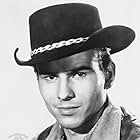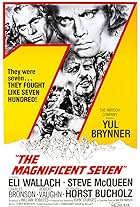The German physician Dr. Struensee, brilliant doctor and favorite of women, is summoned to the royal court in Copenhagen.The German physician Dr. Struensee, brilliant doctor and favorite of women, is summoned to the royal court in Copenhagen.The German physician Dr. Struensee, brilliant doctor and favorite of women, is summoned to the royal court in Copenhagen.
Wilfried Jan Heyn
- Baron Enevied Brandt
- (as Wilfried-Jan Heyn)
Horst Gnekow
- Gen. Reventlau
- (uncredited)
Storyline
Did you know
- ConnectionsReferenced in Boccaccio '70 (1962)
Featured review
The story of the doctor Dr. Friedrich Struensee, who came from the city of Altona, which was committed to the Enlightenment, to the royal court in Copenhagen and tried to change the monarchy through Enlightenment reform efforts, is still popularly told. In 1999, the Swedish writer Per Olov ENQUIST, who was long considered a candidate for the Nobel Prize in Literature, published the novel DER BESUCH DES LEIBARZTES / THE VISIT OF THE PERSONAL DOCTOR. And in 2012, EUROPEAN FILM AWARD winner Mads MIKKELSEN and ACADEMY AWARD winner Alicia VIKANDER presented the Danish film DIE KÖNIGIN UND DER LEIBARZT / THE QUEEN AND THE PERSON in the BERLINALE competition.
The West German feature film by Harald BRAUN (SOLANGE DU DA BIST / AS LONG AS YOU ARE THERE (1953) and REGINE (1956)) was made in 1957 and was based on the original THE QUEEN'S FAVORITE by Robert NEUMANN.
And you can already tell that the love story between Struensee (O. W. FISCHER) and the Danish Queen Mathilde (Odile VERSOIS, a sister of Marina VLADY) is at the center of the action. The political intrigues of Queen Mother Juliane (Elisabeth FLICKENSCHILDT) and the chamberlains (Siegfried LOWITZ, Helmuth LOHNER) are treated rather marginally. The best role goes to the two-time GERMAN FILM AWARD winner Horst BUCHHOLZ (in 1956 he won the award for HIMMEL OHNE STERNE / HEAVEN WITHOUT STARS and in 1985 for WENN ICH MICH FÜRCHTE / WHEN I'M FEAR) as the confused King Christian VII, who is accompanying his colleagues FISCHER (who also won the GERMAN FILM AWARD) ( (awarded in 1955 for LUDWIG II and in 1959 for HELDEN) and FLICKENSCHILDT (awarded in 1964 for DAS GROSSE LIEBESSPIEL) easily plays on the wall. The future CINECITTA diva Ingeborg SCHÖNER can be seen as the queen's lovely chambermaid, who gained new popularity in the 1980s through the crime series SOKO 5113, which ran on the West German television station ZDF.
The film is beautifully photographed. It's only occasionally annoying that you can sense the scenery of the BAVARIA studios. The outdoor shots were taken in Copenhagen and on the North Sea island of Sylt. Wilhelmsthal Castle and the Löwenburg in Kassel served as castles. The film attracted 3.9 million visitors (source: InsideKino) to West German cinemas and achieved an estimated box office gross of EURO 2.535 million.
The West German feature film by Harald BRAUN (SOLANGE DU DA BIST / AS LONG AS YOU ARE THERE (1953) and REGINE (1956)) was made in 1957 and was based on the original THE QUEEN'S FAVORITE by Robert NEUMANN.
And you can already tell that the love story between Struensee (O. W. FISCHER) and the Danish Queen Mathilde (Odile VERSOIS, a sister of Marina VLADY) is at the center of the action. The political intrigues of Queen Mother Juliane (Elisabeth FLICKENSCHILDT) and the chamberlains (Siegfried LOWITZ, Helmuth LOHNER) are treated rather marginally. The best role goes to the two-time GERMAN FILM AWARD winner Horst BUCHHOLZ (in 1956 he won the award for HIMMEL OHNE STERNE / HEAVEN WITHOUT STARS and in 1985 for WENN ICH MICH FÜRCHTE / WHEN I'M FEAR) as the confused King Christian VII, who is accompanying his colleagues FISCHER (who also won the GERMAN FILM AWARD) ( (awarded in 1955 for LUDWIG II and in 1959 for HELDEN) and FLICKENSCHILDT (awarded in 1964 for DAS GROSSE LIEBESSPIEL) easily plays on the wall. The future CINECITTA diva Ingeborg SCHÖNER can be seen as the queen's lovely chambermaid, who gained new popularity in the 1980s through the crime series SOKO 5113, which ran on the West German television station ZDF.
The film is beautifully photographed. It's only occasionally annoying that you can sense the scenery of the BAVARIA studios. The outdoor shots were taken in Copenhagen and on the North Sea island of Sylt. Wilhelmsthal Castle and the Löwenburg in Kassel served as castles. The film attracted 3.9 million visitors (source: InsideKino) to West German cinemas and achieved an estimated box office gross of EURO 2.535 million.
- ZeddaZogenau
- Feb 24, 2024
- Permalink
Details
Contribute to this page
Suggest an edit or add missing content














